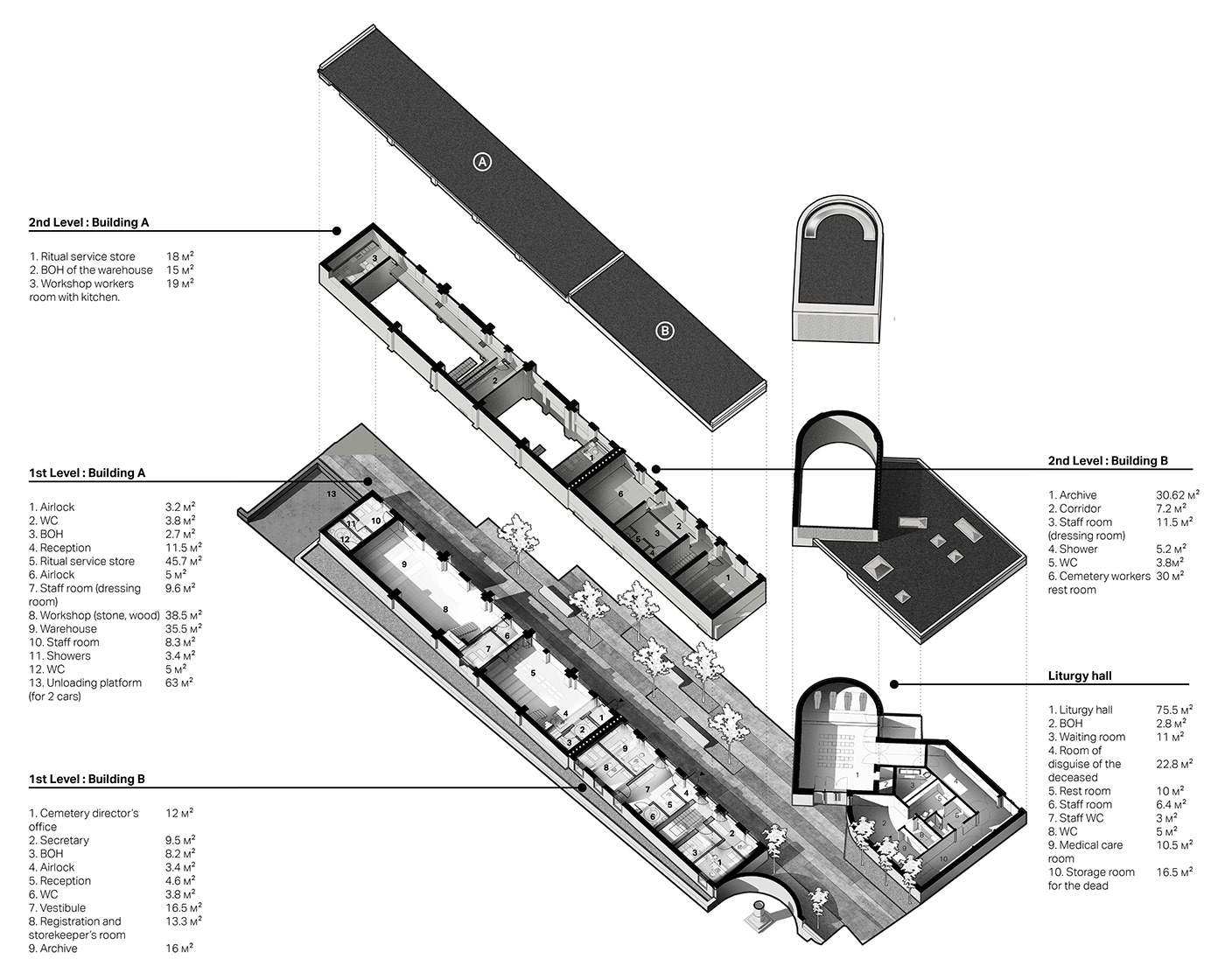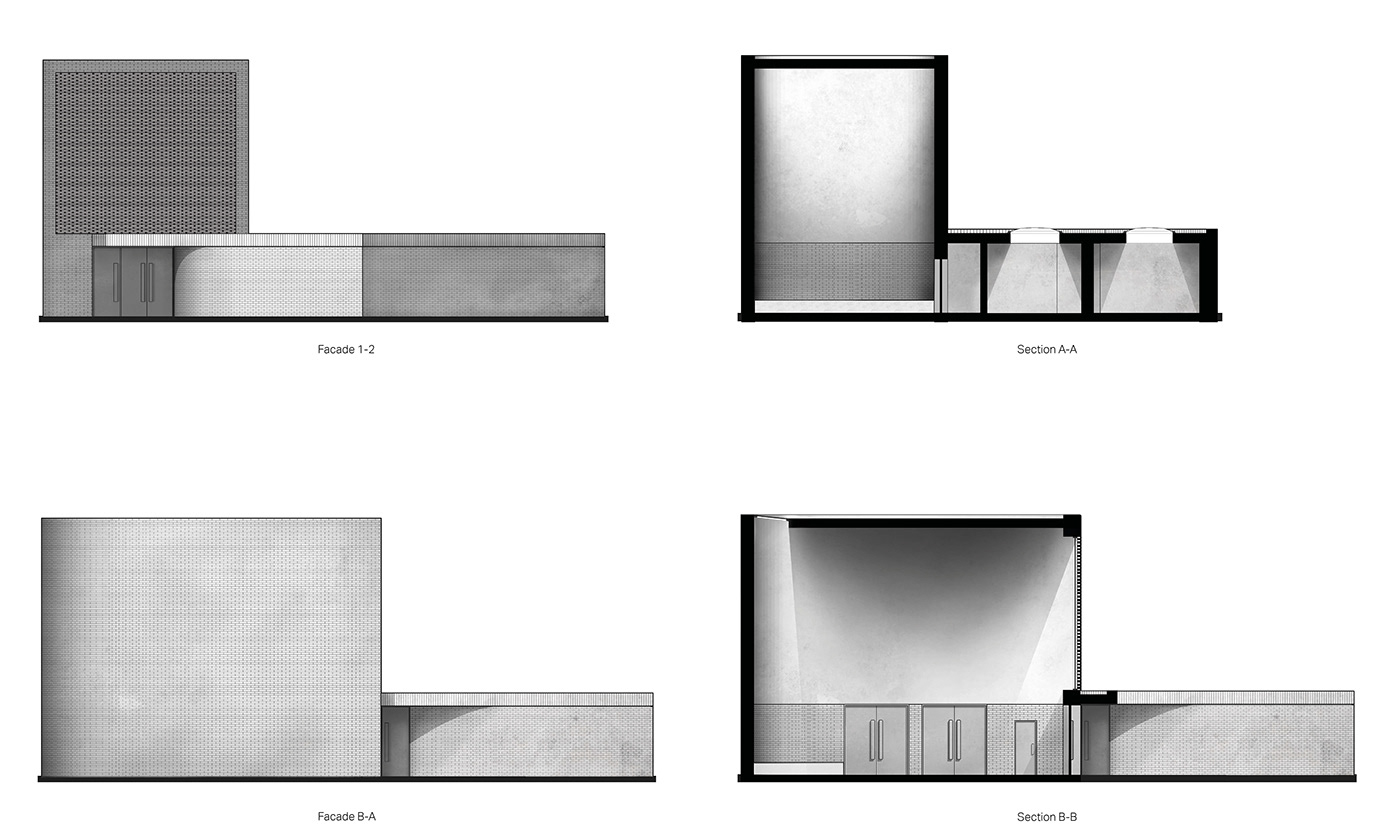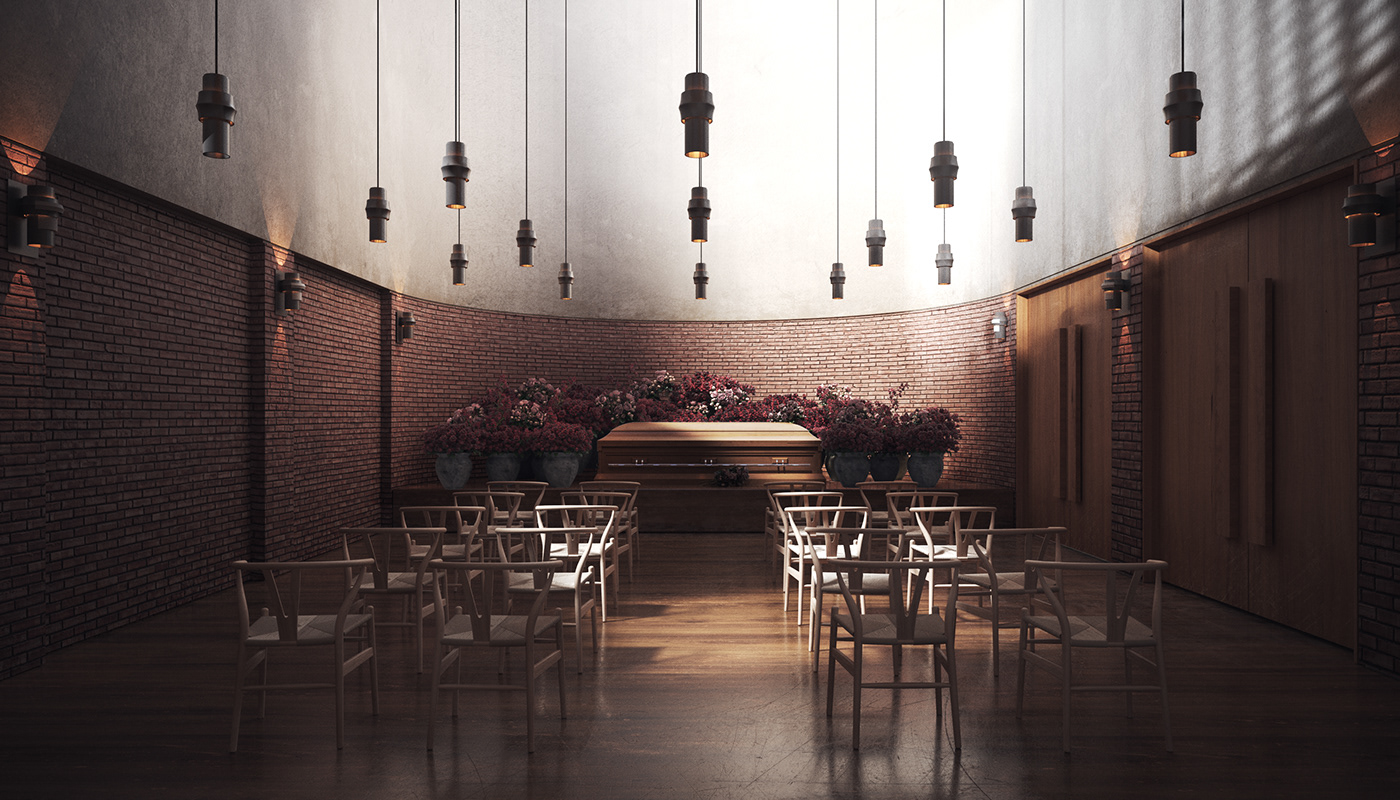
Liturgy hall I Lviv, Ukraine 2020
The concept for the liturgy hall inherits the materiality of the site,a historical Lviv cemetery, and its planning methods. The new volume relates to the territory and its existing functionality. The use of massive simple forms grounds the building, and makes it easy to read both in terms of function and compositional dominance. The simple form serves as a complex spatial and functional organizer, promotes operational simplicity and low-demand care for the building and its territory. The choice of materials and massiveness of the building will contribute to its aesthetic aging and durability.
The main task for the new building was to create religious magnifisence which is not biased to any confession. The liturgy hall contains basic proportions and compositional principles inherent to almost all religious buildings. The plan is based on the square and the circle shapes which are dividing it into two spaces - for the living and for the dead.






The liturgy hall has a latitudinal orientation that is why its northern the part - the place for placing the coffins - projects all the daylight passing through the front of the facade. The facede cladding is made in the alterating brickwork technique which helps to scatter light in an ornamental shape on the floor and walls.


The rest of the Liturgy house has no front windows, instead, rooms are only illuminated by the skylights lights. The intention of this idea is to strengthen the feeling of "otherness" of the experience of being inside of the building in contrast to everyday life. In this way, while entering the building a person breaks off visual communication with the environment, except the sky, which should promote inner concentration, and prepare to say goodbye to the deceased.

Thank you for your attention!






